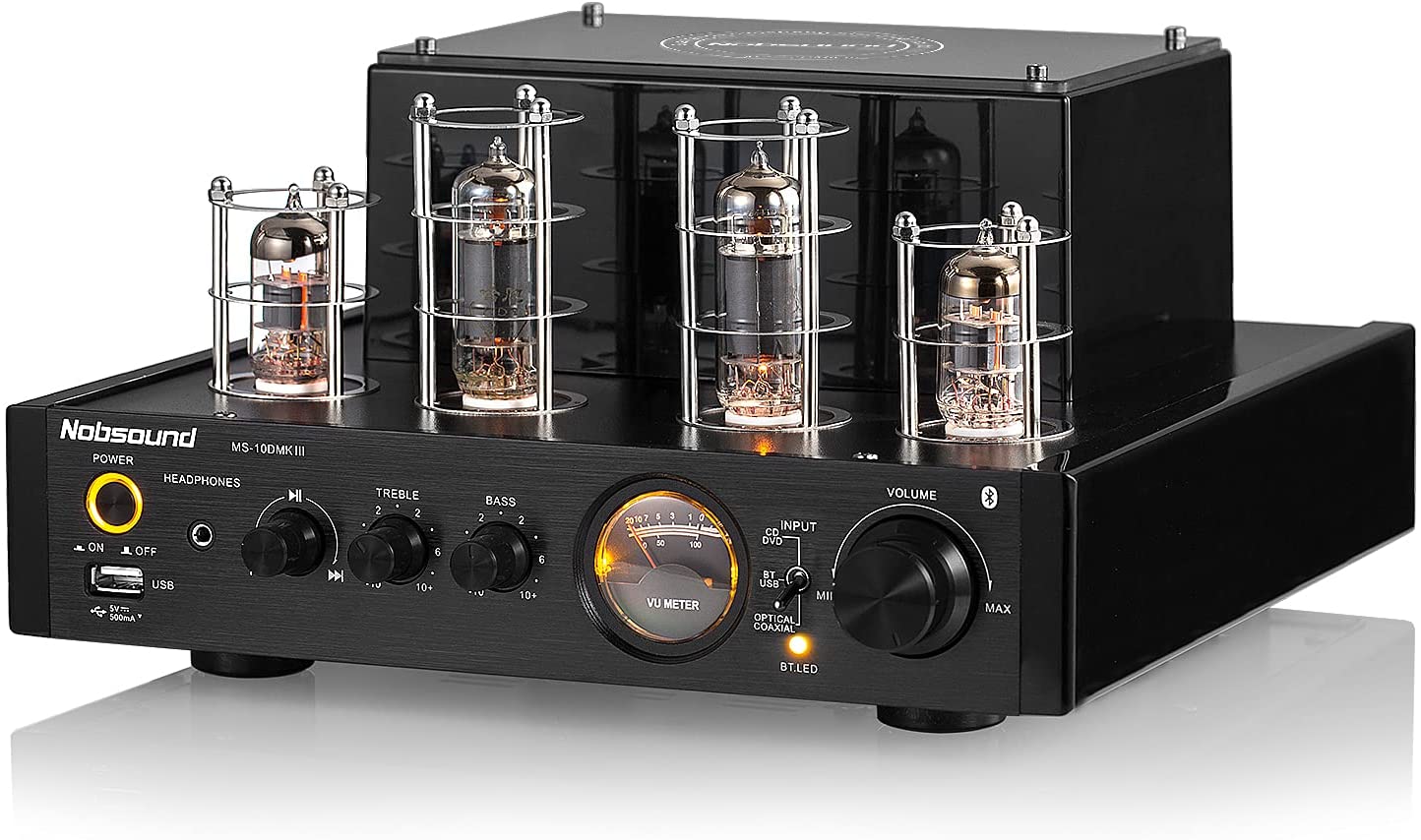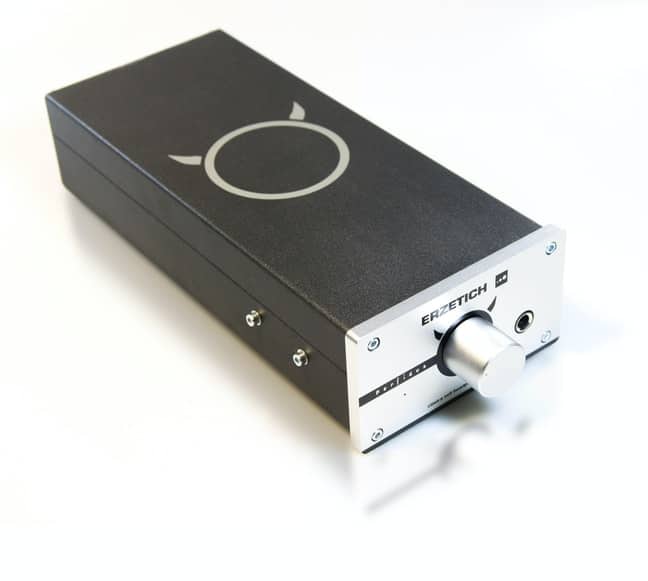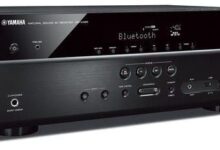If your speaker is not a powered speaker or USB speaker, obviously, you will need an amplifier to get the speaker talking.
However, it can be quite difficult to pick up the best amplifier for your need as there different types of audio amplifiers, and they are actually meant for different purposes. We talked the other day about how to connect HiFi speakers to pc
So, how do you choose the best stereo amplifier for your speakers? And how you set up a stereo amplifier? Let’s discuss these two questions and put you through them.
This article is divided into two sections:
Section One (1): How to choose a stereo amplifier
Section Two (2): How to set up a stereo amplifier
Table of Contents
- 1 Section One: Understanding stereo amplifiers
- 2 Types of Amplifier
- 3 Relationship between preamps, power amps, and integrated amps
- 4 Choosing the best stereo amplifier for home audio (HiFi setup)
- 5 Best integrated amplifier
- 6 Best HiFi speakers
- 7 Best power amplifier
- 8 Fosi Audio BT20A
- 9 Best pre-amplifier
- 10 What more?
- 11 Section Two: How to set up a stereo amplifier?
Section One: Understanding stereo amplifiers
You have to understand how amplifiers are made and how they function for you to be able to make a great choice from the lots in the market.
An amplifier is designed to allow audio inputs from various sources and then pass on to your speakers.
That is to say, an amplifier is a piece of sound equipment that acts as the middleman between your stereo speakers and source.
It can accept audio inputs from a wide range of devices, systems, and equipment such as DACs, tuners, computers, players, turntables, mobile devices, and more.
The simple work of an amplifier is to process sound waves from a source and pass it on with sufficient wattage to your speakers.
There are some amplifiers with sophisticated features, and quite many of them are designed with contemporary technologies so that they can perform quite many actions.
Majorly, there are three types of amplifiers, and you need to know the one that is best for your stereo. This article is written with basic terms that everyone can read and understand. Enjoy reading.
Note: you must introduce an amplifier in any HiFi stack setup. It is the amplifier that powers your HiFi speakers to talk, and it is equally in charge of the volume controls.
Types of Amplifier
There are three major types of amplifiers, which are Pre Amps, Power Amps, and Integrated Amps. Let’s see the uniqueness of these amps and how you can use them with your speakers.
Pre-Amplifiers or Preamps
This type of amplifier is nowhere suitable for audio lovers and audiophiles. Its output is very low; however, it is affordable than the other types.
A preamp simply takes the low-level audio waves from a source and boosts (amplifies) the waves a little bit before sending them to a system where the sound wave will playback at a hearable volume.
Typically, preamps don’t work alone; they need a power amp to be attached if you really want to enjoy your HiFi setup. Interestingly some media players feature built-in preamps.
Power Amplifiers
It is simple, power amps pick up waves from preamps and boost the waves to the high level your HiFi speaker can accept to start talking.
Power amplifiers infuse audio signals with the help of electrical power, and this type of amp can power any speaker you connect to them.
Also, power amps don’t work alone; they need preamps that will pass on the signals from your source.
Integrated Amplifiers
Integrated amplifiers are for audiophiles and hard-core audio lovers. Just as the name implies, integrated amplifiers are amplifiers that combine both preamps and power amps.
That is to say, an integrated amplifier performs the job of a preamp and power amp in an integrated system. It is the best amplifier to buy if you don’t want separate amplifier systems for your HiFi setup.
However, this type of amp is the most expensive of the triad.
Relationship between preamps, power amps, and integrated amps
The preamp picks up the weak (low-level) sound wave from a source and passes it on to the power amp, which now processes, amplifies the sound, and passes it on the connected speakers.
As for integrated amplifiers, the sound processing stages remain the same; the difference is that both the preamp and power amp are now integrated; thus, you don’t need two different amps (preamp and power amp) for sound processing; every process takes place inside the integrated amp.
If you have an integrated amplifier, all you need do is to connect the audio source and also connect your speakers altogether at the rear panel of your amplifier system.
However, take note of the jacks/ports, and make sure each wire/core is connected to the right input port on the amp.
If you’re going for a preamp and power amp (separately), you’ll have to connect the audio source to the preamp, then connect the preamp to the power amp, and further connect the power amp with your stereo HiFi speakers.
Choosing the best stereo amplifier for home audio (HiFi setup)
- It is strongly advisable to go with integrated amplifiers because they save up some space in your room, as well as offer high power that can trigger any HiFi speaker to function.
Why we strongly recommend integrated amps is because if you choose to go with separates systems (a preamp and power amp), it would be quite difficult to find a preamp and power that will match each other.
But when it’s an integrated system, all you need is to connect your source and speakers right away.
- A good integrated amplifier can be gotten for $200 or more, depending on the features and wattage.
Also, as you may guess, the more watts an amplifier supports, the higher the price may be. More features can equally affect the price of an amplifier.
- If your room is a big one, it is advisable to pick up an amplifier with higher wattage. Let’s say an amplifier that offers up to 100 or more watts per channel is perfect for any room.
So, if you’re preparing for home HiFi audio setup, those budget integrated amps from Onkyo, Rockford, and Kenwood will do.
- It would be best to go for a stereo amplifier with multiple input options. This will help if you usually playback sounds from different audio systems and/or devices.
Basically, what you need is an amp with at least USB and Aux inputs. Other input jacks you may have to look out for on a stereo amp are jacks that allow you to connect turntables and computers to the amp.
- Finally, pick a stereo amp with a high signal to noise ratio (dB). However, it all depends on your budget.
Signal to noise ratio simply refers to the level background noise you can hear when playing sounds through your amplifier.
An amplifier with 80 decibels (80db) is very much recommendable; if you can get a unit with higher a decibel, that’s still very good.
Sad to say, but amps with very low decibels don’t really sound good when playing.
These points above will certainly leave you with the best stereo amplifier for your home audio setup.
We understand that a HiFi setup requires the best systems, including amplifiers and speakers; thus, here are our recommended amplifiers and HiFi speakers you can buy at quite an affordable price on Amazon.
Best integrated amplifier
Denon PMA-600NE Stereo Integrated Amplifier
This integrated amplifier system supports Bluetooth connectivity, digital connections for mobile devices, and more. It further features a built-in 192 kHz/24 Bit digital-to-analog converter and offers 70W x 2 channels power.
You will use this amplifier with any set of speakers you have. More interestingly, it is easy to set up; plus, the manufacturer assures that this system durable by offering limited warranty coverage.
Yamaha R-N303BL
Yamaha is a notable audio equipment manufacturer; this integrated amp system from the brands offers up to 100W power and features dual channels. It goes on to support Bluetooth connectivity and up to 65db.
The Yamaha R-N303B is compatible with Amazon Alexa; other connectivity options available on this system include Wi-Fi, wireless direct, Bluetooth, airplay, and music cast multiform Audio.
Interestingly, this amp flaunts a space-saving design and weighs just 15lbs. It is an ideal option for any audiophile homeowner looking for an integrated amplifier system.
Best HiFi speakers
We have written on several types of HiFi speakers, including Bluetooth portable options and bookshelf HiFi speakers. Feed yourself with our extensive reviews of the best HiFi speakers to buy for various needs.
Best power amplifier
Fosi Audio BT20A
This power amplifier is one of the best you can get in the market at the moment. It supports Bluetooth version 4.2 and offers up to 100W power with dual channels (100W x 2). You can directly control the bass and treble levels on the amp’s body.
The design of Fosi Audio BT20A looks pretty attractive, and it is very portable to fit in anywhere you place it. Interestingly, this amp promises to offer up to 98db, which is very much enticing for an audiophile.
Pyle power home HiFi stereo amplifier
This mini power amplifier with 90W (45 x 2)power is equally an ideal choice for anyone looking out for power amps.
It will match with many preamps out there and supports a couple of interesting features. The design looks good and would blend with your room décor/furniture.
Pyle power home HiFi stereo amplifier is a dual-channel amp with mic input and a 3.5mm input jack. It promises up to 80dB and is sold at an affordable price.
Best pre-amplifier
The best preamps we recommend are from Fosi Audio and Pyle, respectively: Fosi Audio Phono Preamp and Pyle Phono Turntable Preamp. Both preamps are a bit pricey, but they are stocked with loads of features you will find useful for your audio transmission needs.
What more?
Obviously, up to this point, you have definitely made a perfect choice of the best stereo amplifier for your HiFi stack. If our guess is right, then we should show you how to connect/set up a stereo amplifier to work with your HiFi speakers.
Section Two: How to set up a stereo amplifier?
Prerequisites
- A stereo amplifier or receiver
- Your audio source: players, turntable, etc.
- HiFi Speakers: two or more
- Required cables: speaker wires, y-adapter cable, other important audio cables
- Speaker stands (optional) and shelf or TV stand to place amp
Got the requirements above? Let’s down to business…
Note: Ensure that all devices/appliances are disconnected from power to avoid short-circuiting and other possible electricity hazard situations.
Steps:
- Hookup the audio cables to the stereo amplifier’s input jacks; connect the red cables to the red jacks, and white cables to the white jacks, just in that manner.
Usually, the jacks are labeled and painted; the red jack is for “Right Surround,” mostly indicated with “R,” and the white jack is for “Left Surround,” indicated with “L.”
- Connect the other ends of the audio cable to the audio out jacks on your source (CD player, turntable, etc.).
- Run the speaker wires from your HiFi speakers to the speaker terminals on your amplifier.
Don’t screw the speaker wire to be too tight on the terminals. Once you have connected all the HiFi speakers to the stereo amplifier, the setup is complete.
- You can power on the appliances and systems and playback sounds from your source. The audio should be playing out from the connected HiFi speakers, and you’ll enjoy room-filling sound depending on the speakers’ capability.
Note: while connecting the audio cables from your source to the stereo amplifier, take note of the labeling.
Typically, there are several white and red-colored jacks on the rear side of your amplifier; however, each jack has a label.
Look closely at these labels to connect the audio cables; if you’re connecting from a CD Player, plug the cables into CD input. Similarly, if you’re connecting DVD, plug the cables into the DVD jacks.
Furthermore, you may have to use a selector (or remote control) to select the input source your amplifier should play from.
Final words
Your stereo setup is complete, and you’re now enjoying high-quality sound from your HiFi speaker. Kindly share this piece with your friends; someone may be in need of this guide. Thanks for reading the MHS blog today, enjoy the rest of your day.




